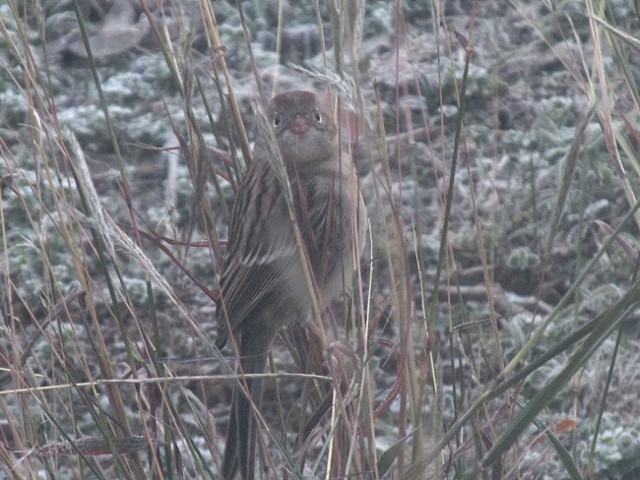While our Texas winters may be brief, the cold, when it comes, can be biting. As we prepared this post, the forecasted weather included lows hovering near 20 degrees for the Hill Country. When it’s well below freezing outside and we’re snug and warm in our den, how do our resident wildlife cope with the cold? From the porcupine protected by its winter underfur as thick as sheep’s wool to the horned lizard buried and waiting deep beneath the sand, wildlife finds a way to survive until the warmth of spring returns.
The White-tailed Deer
White-tailed deer are survivors and their highly adaptable traits come into play during a cold winter. As summer slips into fall and then winter, deer begin to eat more, adding layers of fat to their bodies. By the time winter arrives, they have also shed their reddish summer coats and replaced them with winter coats that help insulate from the cold. While they may not look that different to the naked eye, the winter coats actually differ considerably from summer with thicker, longer hair that is also hollow to trap air and provide insulation. The winter coat is darker and absorbs more solar energy. In addition to the protective hair, the deer also sport an underfur for even more insulation and, thanks to a reaction something akin to our “goose bumps,” they have the ability to puff out their hair for an insulating effect similar to their feathered friends.
The Birds
For those birds who have not already escaped to balmier climes, a dip in temperatures kicks in a variety of survival techniques. Trees and plants with dense, thick branches, such as Ashe juniper, provide shelter from the chilling wind, rain, and snow. Earlier, in the autumn, they prepared for the coming cold by molting and then growing in more and thicker feathers, as well as eating more to add weight and layers of fat. You’ve probably seen a bird perched on a fence or branch, looking particularly fluffed and plumped, but that’s not just because they ate more; by fluffing their feathers, birds add in an insulating layer of air. Smaller birds, such as chickadees, also survive the severe cold by going into a state of torpor; their body temperatures drop and breathing, heartbeat, and metabolism slow to conserve energy.
The Cold-blooded
Animals that cannot generate internal heat — fish, amphibians, and reptiles — are cold-blooded animals, actually something of a misnomer. Cold-blooded simply means the animal’s body temperature is basically the same as its surroundings. That is, a fish swimming in water that is 40 degrees will have a body temperature very near 40 degrees. That same fish in water that is 60 degrees will have a body temperature near 60 degrees. Cold-blooded animals cannot generate internal heat, so they must regulate their body temperature by moving to different environments. A lizard basks in the sun to raise its body temperature and then, when it gets too warm, might scurry to the shade or slide into the water to cool off. For many cold-blooded animals, the cold winter months mean brumation — a process similar to mammal hibernation during which the low environmental temperatures reduce metabolic rate and limit activity. Rattlesnakes often gather together and brumate in large numbers, hundreds of them may be huddled together now, snug and warm in their own den waiting for the warm days return.









